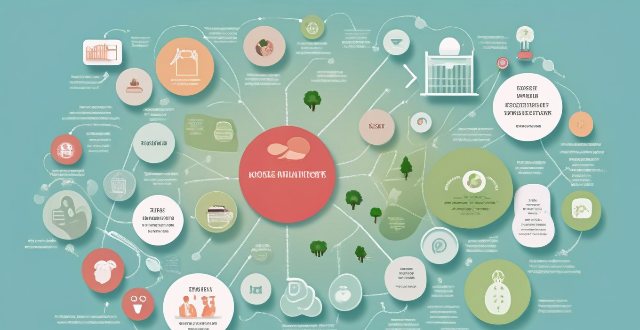Improving access to healthcare services in developing countries is crucial for ensuring the well-being of individuals, regardless of their geographical location or economic status. Key strategies include investing in healthcare infrastructure, training and recruiting healthcare professionals, implementing community-based health programs, and utilizing technology and innovation. By adopting a multifaceted approach that addresses various aspects of the healthcare system, it is possible to make significant strides in improving access to quality healthcare services for all individuals living in developing countries.

Improving Access to Healthcare Services in Developing Countries
Introduction
Access to healthcare services is a fundamental right for all individuals, regardless of their geographical location or economic status. However, in many developing countries, access to quality healthcare services remains a challenge due to various factors such as limited resources, poor infrastructure, and inadequate healthcare workforce. In this article, we will discuss some strategies that can help improve access to healthcare services in developing countries.
Strategies for Improving Access to Healthcare Services in Developing Countries
1. Investment in Healthcare Infrastructure
a. Building More Healthcare Facilities
One of the most effective ways to improve access to healthcare services in developing countries is by investing in healthcare infrastructure. This includes building more healthcare facilities such as hospitals, clinics, and health centers in rural areas where they are needed the most. By doing so, it becomes easier for people living in these areas to access essential healthcare services without having to travel long distances.
b. Upgrading Existing Healthcare Facilities
Another strategy is to upgrade existing healthcare facilities by providing them with modern equipment, supplies, and technologies. This can help improve the quality of care provided and increase the efficiency of healthcare workers. Additionally, upgrading healthcare facilities can attract more healthcare professionals to work in these areas, which can further improve access to healthcare services.
2. Training and Recruitment of Healthcare Workforce
a. Increasing the Number of Healthcare Professionals
One of the main challenges faced by developing countries is the shortage of healthcare professionals, particularly in rural areas. To address this issue, governments and non-governmental organizations (NGOs) should invest in training programs that focus on producing more doctors, nurses, midwives, and other healthcare professionals who are willing to work in underserved areas.
b. Providing Continuing Education and Training Opportunities
In addition to increasing the number of healthcare professionals, it is also important to provide them with ongoing education and training opportunities. This can help ensure that they stay up-to-date with the latest medical advancements and best practices, which can lead to better patient outcomes and improved overall healthcare services.
3. Community-Based Health Programs
a. Promoting Preventive Healthcare Measures
Community-based health programs can play a crucial role in improving access to healthcare services by promoting preventive healthcare measures at the community level. These programs can include vaccination campaigns, maternal and child health initiatives, and public health awareness campaigns aimed at reducing the incidence of common diseases and illnesses.
b. Engaging Local Communities in Healthcare Delivery
Engaging local communities in healthcare delivery can help ensure that healthcare services are tailored to the specific needs of each community. This can be achieved by involving community members in the planning, implementation, and evaluation of healthcare programs. Additionally, community health workers can be trained to provide basic healthcare services and refer patients to higher-level facilities when necessary.
4. Utilizing Technology and Innovation
a. Telemedicine and mHealth Solutions
Technology and innovation can play a significant role in improving access to healthcare services in developing countries. Telemedicine and mobile health (mHealth) solutions allow healthcare professionals to remotely diagnose and treat patients, particularly those living in remote areas with limited access to healthcare facilities. These technologies can also facilitate the sharing of medical information between healthcare providers, leading to better coordination of care and improved patient outcomes.
b. Digital Health Records and Data Management Systems
Investing in digital health records and data management systems can help improve the efficiency and effectiveness of healthcare delivery in developing countries. These systems can streamline administrative processes, reduce paperwork, and enable healthcare providers to quickly access patient information, leading to faster diagnosis and treatment decisions.
Conclusion
Improving access to healthcare services in developing countries requires a multifaceted approach that addresses various aspects of the healthcare system. By investing in healthcare infrastructure, training and recruiting healthcare professionals, implementing community-based health programs, and utilizing technology and innovation, it is possible to make significant strides in improving access to quality healthcare services for all individuals living in developing countries.